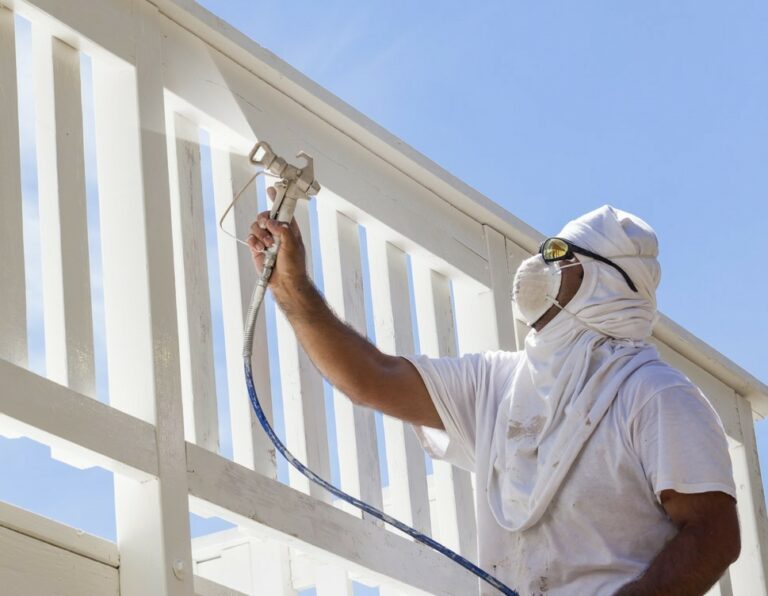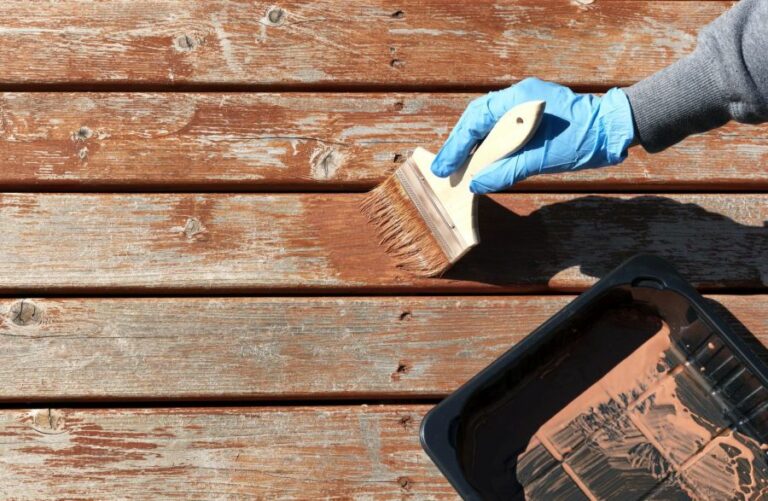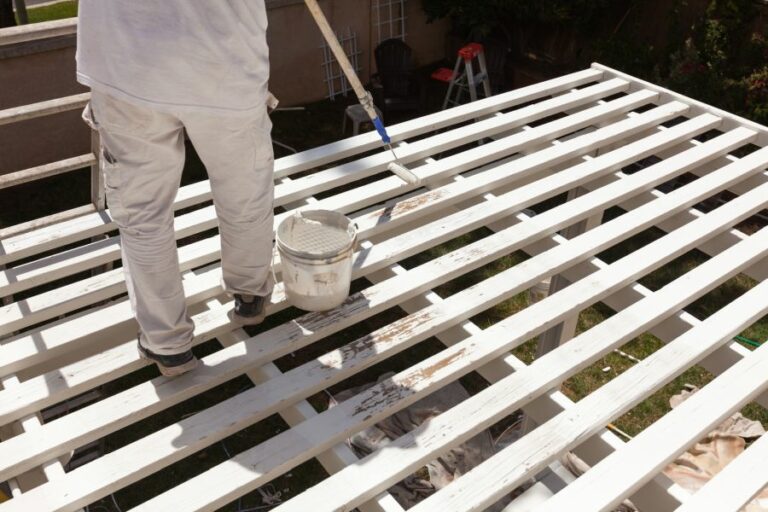Paint For Outdoor Signs, 25 Things You Should Know
Looking for the perfect paint to make your outdoor signs stand out and withstand harsh weather conditions? Search no more! I will guide you through the essential factors when choosing paint for your signs. Discover the wide variety of durable, vibrant, and eco-friendly options available in the market that deliver professional results without breaking the bank.
Paint for outdoor signs:
Outdoor signs require durable, weather-resistant paint to withstand environmental factors such as sun, rain, and humidity. Depending on the sign’s material and texture, UV-resistant, water-resistant, and flexible paints like acrylic, oil-based, latex, or spray paint can be used. Proper surface preparation, primer application, and sealing with protective coatings help achieve a long-lasting, vibrant finish. Regular maintenance, cleaning, and timely repairs aid in prolonging the life and appearance of outdoor signs.

Discover the best paints for outdoor signs, ensuring vibrant colors and lasting durability. Understand various types of paint, application techniques, and maintenance tips. Elevate your signage game with quality products and expert advice. Let’s create eye-catching, weather-resistant masterpieces!
Contents
- 1 Exterior Paint for Outdoor Signage
- 2 What is the Most Effective and Durable Paint for Outdoor Signage Lettering?
- 3 What is the Process for Weatherproofing My Outdoor Signs?
- 4 What Type of Paint Should Be Applied to Wooden Signs?
- 5 What is the Optimal Finish for an Outdoor Signage?
Exterior Paint for Outdoor Signage
Outdoor signs are essential for businesses and events alike, as they provide an effective and visually engaging way to convey information to a wide audience.
Given their importance, choosing the right paint that can ensure durability and longevity, despite constant exposure to various weather conditions is necessary.
• Importance of Using Weather-Resistant Paint
Outdoor signs are continuously exposed to various environmental factors, such as sun, rain, snow, wind, and pollution. These conditions can cause the sign to fade, crack, peel, or chip if not properly protected.
Weather-resistant paint is specifically formulated to withstand these elements, providing a long-lasting and vibrant finish that keeps your sign looking new and eye-catching.
– UV Resistance
Sun exposure is one of the main factors that can affect the color and durability of outdoor signs. Prolonged exposure to ultraviolet (UV) radiation weakens the pigments in the paint, causing the colors to become dull and fade.
UV-resistant paints and coatings contain special additives that protect the surface from UV light degradation, ensuring your sign’s colors remain vibrant and true.
– Water Resistance
Water-resistant paint is an essential factor to consider for any outdoor sign, as exposure to rain, snow, or humidity can cause the paint to swell or peel. Water-resistant paint has a special formulation that prevents water absorption, protecting the substrate from damage caused by moisture.
– Durability and Flexibility
Outdoor signs are often made from materials that expand or contract due to changes in temperature or humidity. Using durable and flexible paint will help prevent the paint from cracking, peeling, or chipping as the material expands and contracts.
This ensures that your sign remains in pristine condition throughout the year.
• Types of Paint for Outdoor Signs
Several types of paint are available for outdoor signs, each with unique characteristics and benefits. When choosing the appropriate paint, consider factors such as the material and texture of the sign, as well as the desired finish and appearance.
– Acrylic Paint
Acrylic paint is a versatile and popular choice for outdoor signs due to its excellent UV resistance, water resistance, and flexibility. It dries quickly to a smooth, durable finish and can be used on various surfaces, including wood, metal, plastic, and even fabric banners.
Acrylic paint is available in various colors, finishes (matte, satin, or gloss), and quality levels, making it an excellent option for most outdoor sign projects.
– Oil-Based Paint
Oil-based paints are more durable and long-lasting than acrylic paints, but they take longer to dry and can be more challenging to work with. They are best suited for signs made from metal or wooden material, as they provide excellent adhesion and a durable finish.
Oil-based paints can withstand extreme weather conditions and do not easily crack or peel with age.
– Latex Paint
Latex paint is another popular choice for outdoor signs due to its water-based nature and ease of use. It dries quickly, is easy to clean up, and has low levels of toxic fumes. This type of paint offers a durable finish that resists fading, peeling, and chipping.
However, it is not recommended for use on flexible surfaces such as vinyl, as it may crack under expansion or contraction.
– Spray Paint
Spray paint is a quick and efficient option for painting outdoor signs, especially when dealing with intricate or hard-to-reach areas. Most spray paints are formulated with weather-resistant properties and provide good coverage with a smooth, even finish.
They are available in a wide variety of colors and finishes, including metallic and fluorescent options.
• Applying Paint to Outdoor Signs
Careful preparation, application, and finishing techniques are essential for achieving a professional-looking, long-lasting outdoor sign.
– Surface Preparation
Properly prepare the sign’s surface by cleaning and sanding it to ensure the paint adheres well. Remove any dirt, grease, or old paint before applying new paint. If your sign has a glossy surface, lightly sanding it will help the paint adhere better.
– Primer
Using a primer is a crucial step in painting outdoor signs. The primer creates a smooth, uniform surface for the paint to adhere to, enhances the paint’s durability, and reduces the number of coats needed to achieve full coverage.
Choose a primer that is compatible with the type of paint you have selected and apply it following the manufacturer’s instructions.
– Application
When applying paint, use thin, even coats, allowing each coat to dry completely before applying the next layer. This will minimize the risk of drips, streaks, or uneven coloration. For large surfaces, use a high-quality brush or roller for even coverage.
– Sealing and Finishing
After the final coat of paint has dried, applying a protective sealant or coating is essential to help protect your sign from the elements. Clear polyurethane, varnish, or a UV-resistant clear coat are excellent options to consider for added protection.
• Maintaining Your Outdoor Sign
Regular maintenance will help prolong the life of your outdoor sign and keep it looking its best.
- Regularly clean your sign to remove dirt, dust, and cobwebs. Use a soft brush and water to avoid damaging the paint.
- Inspect your sign frequently for signs of damage or wear, addressing any issues as soon as possible to prevent further deterioration.
- Repaint your sign as needed to maintain its vibrant color and appearance.
In conclusion, choosing the right paint for your outdoor sign is crucial to ensure its longevity and durability. With the correct application and maintenance, your sign will remain vibrant and eye-catching for years.
What is the Most Effective and Durable Paint for Outdoor Signage Lettering?
Outdoor sign writing is an excellent way to attract potential customers to your business, but choosing the right paint is essential for durable and vibrant signs.
• Acrylic Latex Paint: A Great All-Around Option
Acrylic latex paint is a popular choice for outdoor sign writing because it is durable, long-lasting, and available in a wide variety of colors. Here are some key benefits and tips when using acrylic latex paint for your outdoor signs:
– Durability and Weather Resistance
Acrylic latex paint is known for its excellent adhesion properties, reducing the chances of peeling or chipping over time. It also withstands weather elements such as rain, snow, and sunlight, ensuring that your outdoor signs remain vibrant for long periods.
I recommend applying a UV- and water-resistant clear coat over the acrylic paint, as it will provide additional protection and help maintain the color vibrancy.
– Easy to Use and Clean Up
Acrylic latex paint is water-based, making it easy to work with and clean up. It dries more quickly than oil-based paints and does not emit strong odors. Moreover, brushes and other tools used for painting can be easily cleaned with soap and water, minimizing any work-related messes.
– Versatility
Acrylic latex paint works well on a variety of surfaces, including wood, metal, and plastic. This versatility is essential for outdoor sign-writing projects, as different businesses may require signage on various materials.
• Oil-Based Paint: Long-Lasting and Vibrant Colors
Oil-based paint is another excellent option for outdoor sign writing, providing a higher level of durability and more vibrant colors compared to acrylic latex paint. Here are some important points to consider when using oil-based paint:
– Durability and Weather Resistance
Oil-based paint is known for its long-lasting and durable finish, making it suitable for outdoor signs exposed to harsh weather conditions. It provides excellent water resistance and can maintain its color vibrancy for several years when combined with a UV-resistant clear coat.
– Color Vibrancy and Opacity
Oil-based paint typically contains more pigments than acrylic latex paint, resulting in more vibrant and opaque colors. This means that fewer coats may be needed to achieve the desired color, making it an efficient option for sign writing.
However, it’s important to note that oil-based paint can take longer to dry than acrylic latex paint, emitting stronger odors during application.
• Enamel Paint: Ideal for Metal Surfaces
Enamel paint is a popular choice for metal surfaces, providing a hard and glossy finish that resists chipping and scratching. Here are the primary advantages of using enamel paint for outdoor signwriting:
– Durability
Enamel paint is highly durable and known for its chipping, scratching, and fading resistance. This makes it ideal for outdoor signs placed in high-traffic areas or exposed to harsh weather conditions.
– Glossy Finish
The glossy finish of enamel paint is visually appealing and makes it easier to clean and maintain. Dirt and dust are less likely to adhere to the surface, keeping outdoor signs looking fresh and professional.
• Quality Matters: Invest in High-Quality Paint
Regardless of the type of paint chosen, investing in high-quality paint is essential for creating durable and eye-catching outdoor signs. Low-quality paints are more likely to fade or peel, requiring frequent touch-ups or replacement.
On the other hand, high-quality paints may have a higher initial cost but will provide long-term savings due to their durability and reduced maintenance requirements.
• In Conclusion
Acrylic latex paint, oil-based paint, and enamel paint all have unique strengths and weaknesses in outdoor sign writing. Consider factors such as surface material, weather exposure, and desired color vibrancy when selecting the best paint for your particular project.
Remember, investing in high-quality paint is essential to ensure that your signs remain vibrant and effective for as long as possible. By following the recommendations and tips provided in this comprehensive guide, you’ll be on your way to creating outdoor signs that effectively promote your business and withstand the test of time.
Paint Type | Pros | Cons |
|---|---|---|
Acrylic Paint | Water-based, easy to clean, quick-drying, durable, vibrant colors | May not adhere well to some surfaces, can be expensive |
Oil-Based Paint | Long-lasting, adheres well to many surfaces, high-quality finish | Slow drying, requires solvents for clean-up, may fade over time |
Enamel Paint | Weather-resistant, hard finish, glossy appearance | Can be difficult to work with, requires ventilation, longer drying time |
Latex Paint | Water-based, easy to clean, quick-drying, cost-effective | May not provide a durable finish, less vibrant colors |
What is the Process for Weatherproofing My Outdoor Signs?
Outdoor signs are crucial to any business, organization, or event. A well-maintained, long-lasting sign draws attention and creates a positive first impression and enhances your brand image.
Ensuring your signs remain durable and resilient to adverse weather conditions is essential to protect your investment and maintain their effectiveness for an extended duration.
– Material Selection: Choosing the Right Materials for Your Signs
The foundation of a weatherproof outdoor sign is the material used for its construction. Selecting the appropriate materials for your specific requirements will save you time and money in the long run. Some popular choices include:
Aluminum
Aluminum is lightweight, rust-resistant, and durable, making it a common choice for long-lasting outdoor signs. It can withstand harsh weather conditions and is low maintenance.
Corrugated Plastic
Corrugated plastic is an affordable and lightweight option often used for temporary signs like yard signs and event promotions. While not as durable as aluminum, it can still withstand moderate weather conditions. Adding a protective laminate can help extend its life.
PVC
PVC (Polyvinyl Chloride) is popular for rigid indoor and short-term outdoor signs. It is lightweight, water-resistant, and moderately durable for weather resistance. Keep in mind that prolonged exposure to sunlight can cause PVC to become brittle and crack, so it is best to use it in shaded areas or for temporary displays.
Acrylic
Acrylic is a versatile and attractive option for outdoor signage. It is weather-resistant, UV-stable, and shatter-resistant. However, it can be prone to scratching, so be cautious when handling and cleaning the material. A protective laminate can help reduce the risk of scratches.
– Protective Coatings and Lamination
Adding a protective layer to your outdoor signs is critical in preventing damage and extending their lifespan. Some common options include:
UV Protective Laminate
UV protective laminates are designed to shield your signage from harmful UV rays, which can cause fading, discoloration, or cracking. This type of laminate also offers protection against moisture, scratches, and abrasions, ensuring your sign remains in top condition.
Anti-Graffiti Coatings
Anti-graffiti coatings are a transparent, protective layer applied to the sign’s surface, making cleaning and removing any potential graffiti or vandalism easier. This coating protects your sign from damage and helps maintain its professional appearance.
Clear Coat Sealant
A clear coat sealant is a weather-resistant coating that offers added protection against moisture, dirt, and UV rays. It acts as a barrier for your sign, keeping the underlying material and printed graphics safe from environmental damage.
– Proper Mounting and Installation
Securely mounting and installing your outdoor signs is vital to ensuring they can withstand strong winds, storms, and other potential risks. Some recommended practices include:
Sturdy Mounting Hardware
Choose heavy-duty mounting hardware such as bolts, screws, and brackets to secure your sign in place. Avoid using cheap, flimsy materials that can easily break or fail in harsh conditions.
Strategic Placement
Consider where you install your sign carefully. Avoid low-lying areas prone to flooding or direct sunlight, which can cause fading or warping over time. Placing your sign in more sheltered, shaded areas can help extend its life.
Regular Maintenance and Inspection
Inspect your mounting hardware and sign regularly, checking for signs of wear, rust, or damage. Timely maintenance will help prevent small issues from becoming major problems and can extend the longevity of your outdoor signs.
– Proper Cleaning and Maintenance
Well-maintained outdoor signs continue to look professional and effective, even after exposure to harsh weather conditions. Implementing a regular cleaning and maintenance routine will help preserve your signage:
Mild Cleaning Solutions
Use a gentle cleaning solution, such as a mix of water and mild dish soap, to remove dirt and debris from your sign. Avoid abrasive cleaners or harsh chemicals, which can cause scratches or damage to your sign’s surface.
Soft Cloths or Sponges
Use a soft cloth or sponge to wipe your sign clean gently. Do not use abrasive materials like brushes or scouring pads, which can cause scratches and harm the sign’s protective layers.
Regular Schedule
Establish a routine cleaning schedule, depending on your location and environmental conditions. Frequent cleaning will help prevent the buildup of dirt, grime, and other contaminants that can harm your sign’s appearance and longevity.
• Conclusion
Outdoor signs are an essential component of effective advertising and communication efforts.
By selecting the right materials, adding protective layers, ensuring proper installation, and maintaining a regular cleaning and inspection schedule, you can significantly extend the life of your signs and protect your investment.
Weatherproofing your outdoor signs will save you money and help maintain a positive, professional brand image for your business or organization.
What Type of Paint Should Be Applied to Wooden Signs?
When it comes to creating wood signs, selecting the right type of paint is crucial for achieving a professional and long-lasting finish. With various paints on the market catering to different applications and finishes, it can be challenging to decide which is the best choice for your wood signs.
• Acrylic Paints: A Popular Choice for Wood Signs
Acrylic paint is a popular choice for wood signs due to its versatility, durability, and ease of use. It dries quickly and adheres well to wood surfaces, providing a vibrant and long-lasting color. Some benefits of using acrylic paint for wood signs include:
– Easy Application
Acrylic paint can be applied using a variety of tools, including brushes, rollers, and even sponges. It also tends to flow smoothly across wood surfaces, making it easy to achieve even coverage.
– Water-Based Formula
As a water-based paint, acrylic is easy to clean up with soap and water, making it an ideal choice for those who prefer a low-maintenance painting process.
– Wide Range of Colors and Finishes
Acrylic paints are available in a vast array of colors and finishes, including matte, satin, and glossy. This variety makes it easy for artists to achieve the specific look they desire for their wood signs.
– Quick Drying Time
One of the primary benefits of using acrylic paint for wood signs is its quick drying time. Typically, acrylic paint dries within an hour, allowing artists to work quickly and efficiently.
• Oil-Based Paints: A Durable and Long-Lasting Option
Another type of paint that works well on wood signs is oil-based paint. Known for its durability and resistance to the elements, oil-based paint provides a long-lasting finish that is less prone to chipping and fading. Some benefits of using oil-based paint for wood signs include the following:
– Superior Durability
Oil-based paints form a hard, protective layer on wood signs, making them resistant to wear and tear. This durability makes oil-based paint an excellent option for outdoor signs that are exposed to harsh weather conditions.
– Rich Colors and Finishes
Oil-based paints provide a rich and vibrant color that is less likely to fade over time. Additionally, they are available in various finishes, such as glossy, semi-gloss, and satin, allowing for a range of creative possibilities.
– Longer Drying Time
While the longer drying time of oil-based paints can be a drawback for some artists, it can be advantageous for those who prefer to work more slowly or wish to spend more time blending colors and perfecting their designs.
• Enamel Paint: Weather-Resistant and High-Gloss Finish
Enamel paint is another suitable option for wood signs, particularly those that will be displayed outdoors. Enamel paint is known for its excellent weather resistance and high-gloss finish, making it perfect for creating eye-catching and long-lasting wood signs.
Some benefits of using enamel paint for wood signs include the following:
– Weather-Resistant Formula
Enamel paints are specifically designed to withstand exposure to the elements, making them an excellent choice for outdoor wood signs that need to endure a variety of weather conditions.
– High-Gloss Finish
The high-gloss finish of enamel paint adds a professional touch to wood signs, providing a sleek and shiny appearance that attracts attention.
– Excellent Adhesion
Enamel paint adheres well to wood surfaces, ensuring that your sign’s design remains intact and vibrant for an extended period.
• Personal Recommendations and Tips for Painting Wood Signs
Based on personal experience, here are some recommendations and tips for painting wood signs:
- If you’re new to painting wood signs, start with acrylic paint due to its ease of use, quick drying time, and easy cleanup. As you gain experience, you can experiment with other types of paint, such as oil-based and enamel.
- No matter which type of paint you choose, always prime your wood surface before painting to ensure proper adhesion and prolong the life of your wood sign.
- When painting with acrylics, use high-quality brushes designed for acrylic paint to achieve smooth and even coverage.
- If you’re working with oil-based paint, consider using a paint conditioner to help it flow more smoothly on the wood surface.
- Always allow your paint to dry fully between coats and before adding any protective sealant. This will help prevent any peeling or chipping of the paint layers.
In conclusion, acrylic, oil-based, and enamel paints are all suitable options for wood signs, with each offering its unique benefits and challenges.
By considering the various factors discussed in this article, you can determine the best type of paint for your specific project and create beautiful, long-lasting wood signs.
| What kind of paint do you use on wood signs? | ||
|---|---|---|
| Type of Paint | Description | Benefits |
| Acrylic Paint | Water-based paint with a fast drying time | Easy to clean up, durable, and available in a wide range of colors |
| Latex Paint | Water-based paint that can be applied with a brush or a sprayer | Easy to apply, long-lasting, and easy to clean up |
| Oil-based Paint | Slow drying paint with a thicker consistency | Provides a glossy finish, offers maximum durability, and is resistant to both moisture and damage |
| Enamel Paint | Paint that provides a hard, glossy finish once dried | Highly resilient, long-lasting, and easy to clean up |
What is the Optimal Finish for an Outdoor Signage?
Outdoor signs are a crucial investment for businesses and organizations seeking to make a good visual impact and effectively communicate with their target audience.
With ever-changing weather conditions and environmental factors, choosing the right finish for your outdoor sign is important to ensure longevity and durability.
• The Importance of a Durable Finish for Outdoor Signs
The finish of an outdoor sign is a significant factor that determines the sign’s durability, resistance to environmental damage, and overall appearance. A sign with a poor finish may peel, crack, or fade over time, resulting in an unattractive and unprofessional look.
In addition, it will ultimately require frequent replacement or repair, leading to unnecessary expenses. Therefore, selecting the right finish for your outdoor sign is a vital decision that should be made with careful consideration.
• Common Materials and Finishes for Outdoor Signs
Below is an overview of some popular materials and finishes for outdoor signs:
– Acrylic and Polycarbonate
Acrylic and polycarbonate materials are often used for outdoor signs due to their excellent durability and weather resistance. Both materials provide a clear, glossy finish and can be customized with various colors and designs.
The high transparency of these materials makes them an ideal choice for illuminated or backlit signs.
Recommendation: If you are looking for a durable, weather-resistant, and transparent outdoor sign, consider using acrylic or polycarbonate materials as your primary option.
– Painted Aluminum
Painted aluminum is a popular choice for outdoor signs due to its lightweight, rustproof, and weather-resistant properties. Aluminum signs can be finished with a clear coat or painted with acrylic, enamel, or epoxy paints that provide excellent adhesion, gloss retention, and resistance to fading and chipping.
Recommendation: For a lightweight and rustproof outdoor sign, select painted aluminum as your preferred material and opt for high-quality paints with excellent adhesion and gloss retention properties.
– Vinyl Graphics
Vinyl graphics, also known as vinyl decals or stickers, are an affordable and versatile option for outdoor signs. Vinyl graphics can be applied to various substrates, such as aluminum, acrylic, polycarbonate, and more.
High-quality vinyl graphics are resistant to fading, cracking, and peeling, making them suitable for outdoor use.
Recommendation: If affordability and versatility are a priority, incorporate vinyl graphics into your outdoor sign design. Ensure the use of high-quality vinyl to prolong the sign’s lifespan.
– Powder Coating
Powder coating is a cutting-edge finishing technique that uses a dry, free-flowing powder to create a smooth, protective coating on metal surfaces. The coated metal is then heated in an oven, causing the powder to melt and cure into a durable and attractive finish.
Powder coating is available in a wide range of colors and is known for its excellent resistance to scratching, chipping, fading, and corrosion.
Recommendation: Consider powder coating for metal outdoor signs, as it offers an attractive, long-lasting finish that can withstand harsh environmental conditions.
– Clear UV Protective Coating
A clear UV protective coating is a specially formulated and transparent finish that can be applied to outdoor signs. This coating protects the sign from harmful ultraviolet (UV) rays, preventing fading and discoloration caused by prolonged sun exposure.
A UV protective coating can significantly extend the lifespan of outdoor signs by providing an additional layer of protection.
Recommendation: In locations with prolonged sun exposure, consider adding a clear UV protective coating to your sign for added protection and extended lifespan.
• Factors to Consider When Choosing the Right Finish for an Outdoor Sign
When selecting the best finish for your outdoor sign, consider the following factors:
- Sign Material: The sign’s material will dictate the type of finish required. Choose a compatible finish that enhances the sign’s durability and visual appeal.
- Environmental Factors: Consider the local weather conditions (temperature, humidity, sun exposure, etc.) and potential environmental hazards (pollution, chemicals, etc.) that may affect the sign. Select a finish that offers protection against these factors.
- Sign Design: The design, graphics, and colors used in the sign will influence the appropriate finish. Opt for a finish that complements the design and enhances the appearance of the sign.
- Budget: While it is essential to prioritize durability and visual appeal, it is also important to remain within your budget. Choose a finish that provides a balance between affordability and quality.
• In Conclusion
Selecting the best finish for an outdoor sign involves careful consideration of the sign’s material, design, and local environmental conditions. By weighing these factors and opting for a high-quality finish, you can significantly enhance your outdoor sign’s durability, appearance, and lifespan.
Whether you choose acrylic, painted aluminum, vinyl graphics, powder coating, or a clear UV protective coating, investing in a durable finish will ultimately improve the effectiveness and longevity of your outdoor sign.







